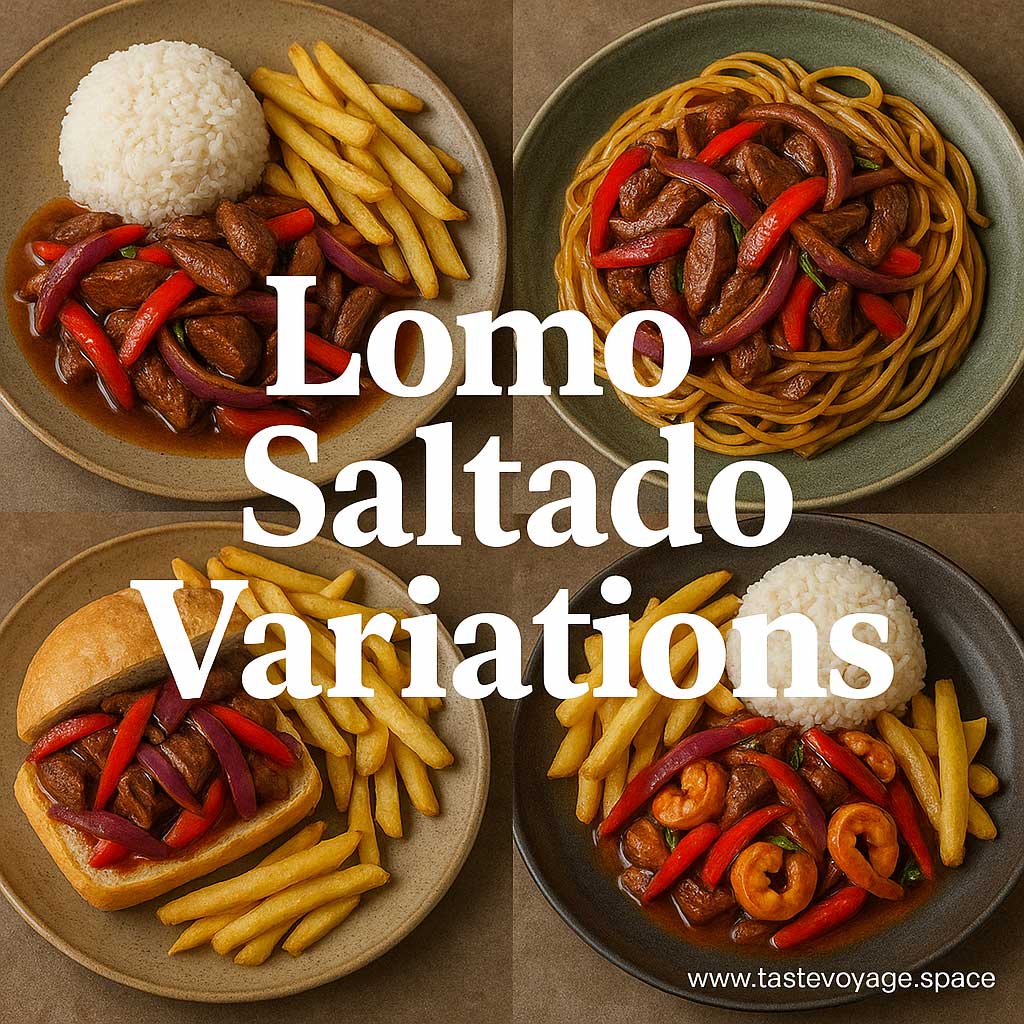Lomo Saltado: The Delicious History & Origins Explained
Travel the World Through Food >> Lomo Saltado Variations>>Peruvian cuisine>> Lomo Saltado: The Delicious History & Origins Explained
Lomo Saltado: The Delicious History & Origins Explained
Introduction to Lomo Saltado: A Peruvian Culinary Treasure
Lomo Saltado is a beloved dish that captures the vibrant essence of Peruvian cuisine. Known for its rich flavors and colorful presentation, this stir-fry combines tender beef, fresh vegetables, and savory sauces. Its popularity extends beyond borders, making it a celebrated symbol of Peru’s diverse and dynamic culinary heritage. But what makes Lomo Saltado so special? In this article, we explore its fascinating history and cultural significance, highlighting its role as a culinary masterpiece that unites tradition and innovation.
The Cultural Roots of Lomo Saltado
Lomo Saltado is more than just a delicious dish; it is a testament to Peru’s rich cultural tapestry. It beautifully illustrates the country’s history of blending different influences into a harmonious culinary expression. The dish’s roots lie in the vibrant Street Food scene of Peru, where quick, flavorful, and satisfying meals are cherished. Its name, “Lomo Saltado,” translates to “jumped loin,” reflecting the lively stir-fry technique that brings the ingredients together.
This dish epitomizes the Peruvian approach to cooking, which celebrates bold flavors, fresh ingredients, and a balance of textures. It showcases the skillful combination of meats, vegetables, and sauces, all prepared with precision and passion. Lomo Saltado stands as a culinary symbol of Peru’s innovation and its pride in sourcing local produce like potatoes, corn, and Fresh Herbs. It’s a dish that invites everyone to share in the joy of good Food and community.
Culinary Significance and Unique Characteristics
What sets Lomo Saltado apart from other stir-fry dishes around the world? Its culinary significance lies in its unique fusion of flavors and techniques. The dish typically features tender strips of beef, often sirloin, quickly stir-fried with onions, tomatoes, and peppers. These ingredients are combined with soy sauce and vinegar, creating a savory, tangy sauce that enhances the dish’s depth.
Lomo Saltado reflects the creativity of Peruvian cuisine, blending indigenous ingredients with influences from Asian cuisines, especially Chinese stir-fry techniques. This fusion has become a hallmark of Peruvian culinary identity, showcasing the country’s openness to culinary innovation. The dish is often served alongside crispy French fries and rice, emphasizing its hearty and satisfying nature.
Culturally, Lomo Saltado is more than a meal; it’s an experience that brings people together. It is commonly enjoyed in family gatherings, social events, and casual dining settings. Its versatility allows it to be adapted and enjoyed by all, making it a staple in Peruvian households and restaurants worldwide.
The Enduring Appeal of Lomo Saltado
Today, Lomo Saltado continues to symbolize Peru’s culinary ingenuity and cultural pride. Its colorful presentation and bold flavors make it a favorite among locals and visitors alike. The dish’s ability to adapt to various tastes while maintaining its core identity underscores its timeless appeal.
Lomo Saltado’s history and origins highlight its importance as a cultural icon. It is a dish that tells a story of tradition, innovation, and community. As it graces tables around the world, it invites everyone to indulge in a culinary journey that celebrates the vibrant spirit of Peru.
Conclusion: Celebrating a Peruvian Classic
Lomo Saltado stands as a shining example of Peru’s rich culinary landscape. Its history and origins reflect a blend of cultural influences, innovative techniques, and a deep appreciation for fresh, quality ingredients. This dish continues to delight palates worldwide, offering a taste of Peru’s vibrant traditions. Whether enjoyed in a bustling city restaurant or prepared at home, Lomo Saltado remains a symbol of culinary artistry and cultural pride. Experience it, savor it, and celebrate the rich heritage it represents.
